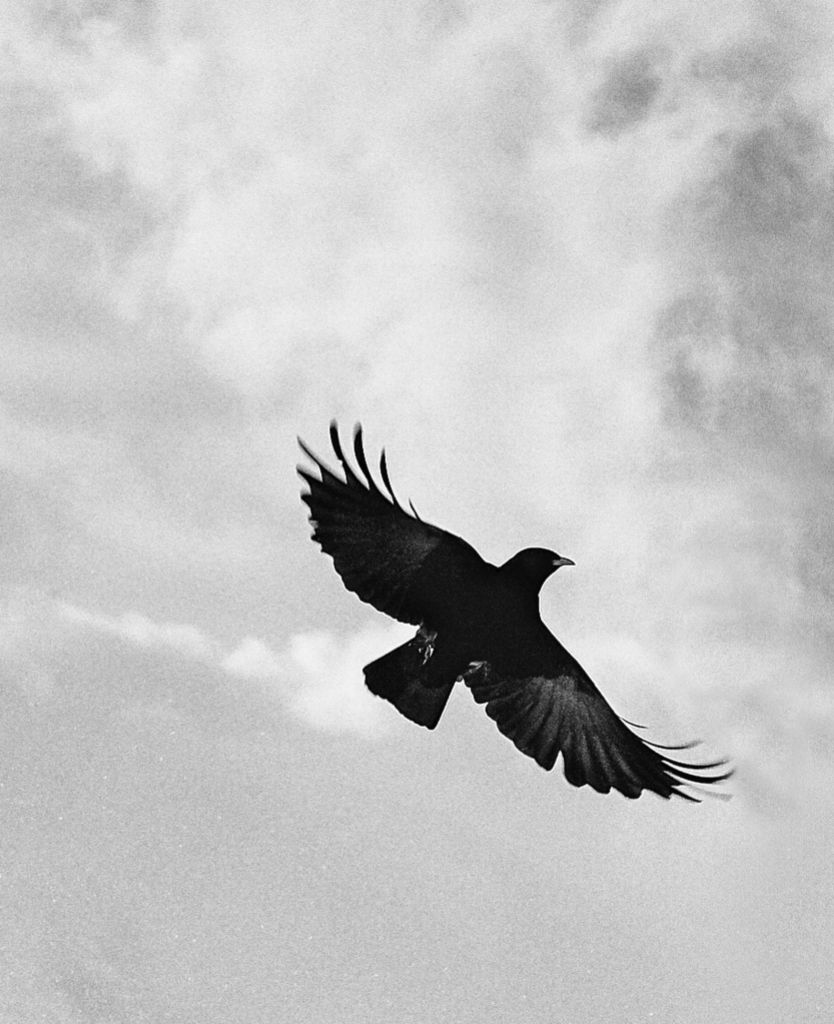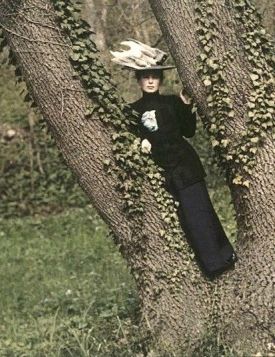My new story "Palingenesis" appears in Shimmer today. I promised I'd have something to say about it: turns out, I have a lot to say about it. The following can be read before or after the story. I hope you enjoy it, and thank you for reading.
 |
| Dream Net at the Museum of Wisconsin Art |
1.
“Uttech's paintings are distinguished from those of most contemporary landscape artists in that he does no drawings, studies or photographs while on these [nature] excursions,” the Milwaukee Art Museum explains. “His paintings are studio inventions based entirely on memory and improvisation. Uttech's landscapes have been described as ‘pure fantasy and, at the same time, absolutely true to nature.’ His use of high-key colors and his depictions of seemingly airless environments give his work a surreal quality.”
2.
This story deserves an introduction. I guess most stories deserve an introduction, but I’m a lazy writer: I want to shove those little bastards out the door, into the waiting hands of editors and copy-editors and publicity interns, and only pipe up about them when asked a direct question. “How did this story come about?” “What’s with the epigraph, what’s with the title?” I’m pretty good at those. Introductions, though—those are a pain in the neck. Especially for a story like this.Hence: This. Blog post. Commonplace book. Blatant rip-off of Wallace Stevens and everyone who’s ripped him off before me. If you enjoy reading this kind of thing, let me tell you: you’re going to love “Palingenesis.”
3.
Rudyard Kipling, “The Way through the Woods” (1910).(They fear not men in the woods,
Because they see so few.)
4.
It doesn’t happen often, but on occasion, my fiction and my academic work cross-pollinate. There’s a notebook on my desk this morning, opened to a handwritten draft of a conference abstract titled “(En)gendering Evolutionary Monstrosity.” I’ve gone back and forth on the title, disliking the modish parenthesis, but not willing to sacrifice the extra semantic mileage it gives me. Never mind the title, I should really be worried about the first sentence: “The monstrous Helen Vaughn expires at the climax of Machen’s ‘Great God Pan’ in a horrific vision of ontogeny recapitulating phylogeny.” Say that ten times fast.
5.
A case of convergent evolution: Nebelung, “Mittwinter” (2014).
6.
I grew up in the Kettle Moraine. When I was a kid, I always misheard “kettle” as the teapot, which bequeathed a certain coziness to the whole geological formation. It's retained the coziness, although over the years, it's also acquired something else.Last summer, a friend and I went hiking in Kettle Moraine State Forest, despite a persistent drizzle and a layer of the thin, cold fog that can crop up in the middle of a Wisconsin August. We climbed to the top of Powder Hill and I snapped a picture on my cell phone, trying to capture a sense of all the wet green miles between us and the horizon. It came out looking flat, like a quilt on a bed, each ridge a separate line of fabric—the purple prairie clover in the foreground, the black treetops just over the edge of the kame, and then the green hills, growing bluer and bluer as they curved out of sight. “No one in California is going to believe me when I tell them how far we walked,” I said.
But that’s the thing about glacial landscapes: they’re deceptive. You’ll never be able to see everything that’s out there.
7.
Arthur Machen, “The White People” (1904). “It was a wild, lonely country; but you know what it was like by her description, though of course you will understand that the colours have been heightened. A child's imagination always makes the heights higher and the depths deeper than they really are; and she had, unfortunately for herself, something more than imagination. One might say, perhaps, that the picture in her mind which she succeeded in a measure in putting into words, was the scene as it would have appeared to an imaginative artist. But it is a strange, desolate land.”
8.
“Ontogeny recapitulates phylogeny” is the root of a lot of lazy thinking. We trace a pattern in an individual act, and want that pattern to apply to a longer period of time. Maybe a whole career. “When do I get out of the rough draft of my writing career?” I’ve asked more than once. But it’s the wrong question, of course, and if you’re going to ask the wrong questions, you can do better than that. For instance: “Why does my writing career look like a chicken?” or “When does my writing career develop a tail?” Point being, you never get out of the rough draft stage. You never start anywhere but the beginning.But the rough drafts do become more interesting. Perhaps a little more monstrous.
9.
Sir Patrick Geddes and John Arthur Thomson, The Evolution of Sex (1890). “The males live at a loss, are more katabolic—disruptive changes tending to preponderate in the sum of changes in their living matter or protoplasm. The females, on the other hand, live at a profit, are more anabolic—constructive processes predominating in their life, whence indeed the capacity of bearing offspring.”
10.
It’s been a year or two since I last finished a poem. I’ve started to cannibalize them in their infancy, steal my own best lines for my short stories. I think that’s how “Palingenesis” started: as an aborted poem. Every city has an explanation.Considering what I was reading at the time, I guess we should be grateful I didn’t say “an ontogeny.”
11.
From a contemporary review of Geddes and Thompson (1890): “The essential nature of sex-character has the greatest practical bearing on human affairs, and its thorough comprehension cannot fail to be of great utility to society. In fact, such knowledge is the one thing needful to regulate the unbridled fancies of the uneducated mind which attempts to deal with the subject, and which has produced innumerable absurdities since the human imagination began to be active.”
12.
I wrote “Palingenesis” in order. Well, somewhat in order; there are two or three sections towards the end that I kept popping out of their settings, switching forwards and backwards, splitting in half or sticking together. But mostly in order—from the city, to the museum, to the woods.I mention this because there’s a part at the beginning that looks like it slipped in later, after a first or second or even a third draft—like an apologia pro apologus suum, an arse-covering move from a writer whose story had gotten away from her. But that part was there before there even was a first draft. I knew from the beginning that none of these pieces were going to fit together neatly.
Still. All of them are part of the story.
13.
Dante Alighieri, Inferno (c. 1308).Midway upon the journey of our life
I found myself within a forest dark,
For the straight-forward pathway had been lost.
Ah me! How hard a thing it is to say
What was this forest savage, rough and stern
Which in the very thought renews the fear.
(Ask Kipling: "But there is no road through the woods.")
Tuesday, January 05, 2016



I just love people and their skill that how they managed to show a perfect story through their painting and their work should be appreciated and you are one of them
ReplyDeleteit is late fall and snow just began falling. i am walking in a woodland clearing along a canyon. I begin getting in the direction of the brink to appearance down on the river below. starting to sense dizzy I think it is exceptional to move away earlier than I fall. Making my manner back closer to the wooded area part I see three white moose gambling about a quarter a mile away within the sparkling snow.
ReplyDeleteI'm glad to learn about palingenesis and theory now you can make your own wiki page just learn here How to Create a Wikipedia Page for Vloggers YouTube
ReplyDeleteThe most ravishing collection of jackets and coats this season. A combination of vibrant and subtle colors, these attires are the perfect pick for your wardrobe. Buy your favorites now at long varsity jacket.
ReplyDelete바카라사이트 This article presents clear idea for the new people of blogging, that really how to do running a
ReplyDeleteblog.
Nice post. I learn something totally new and challenging 카지노사이트
ReplyDeleteon sites I stumbleupon every day. It will always be useful to read content from other writers and use something from their websites.
토토사이트 I appreciate, cause I found exactly what I was looking for. You’ve ended my 4 day long hunt! God Bless you man. Have a nice day. Bye
ReplyDeleteI have been browsing online more than 3 hours lately, but I by no means found any fascinating article like yours. 토토
ReplyDeleteIt is pretty price sufficient for me. In my view, if all webmasters and bloggers made excellent content as you probably did, the web might be much more helpful than ever before.
Wikipedia Writers for hire
ReplyDeleteBecause my mother is from Sweden and I was born there, I am quite familiar with what the youngster said in the documentary. However, Ferdinand's story is difficult to comprehend fiction ghostwriting services for those who do not speak Swedish. The nature film, on the other hand, is worth seeing because it features a stunning scene and a stunning white mouse! Thank you for sharing your knowledge!
ReplyDeleteIndeed it was the big news for all the dance lovers, I also want to be there in the opening ceremony of Mirror Dance but I'm kinda busy with my HNC Assignment Writing Help classes I didn't have a time to attend the re-opining cerenmony.
ReplyDeleteWe are looking for work that is innovative, experimental, and best travel agency in abu dhabi challenging. We are interested in work that pushes the boundaries of form and genre.
ReplyDeletethirteen different perspectives of a blackbird. This interpretation explores the white moose from numerous essay writing Company in California and features, provoking viewers to consider its presence and importance in varied circumstances.
ReplyDeleteI would like to bookmark the page I come to read again. Wonderful job
ReplyDeleteYou’ve written information I can finally agree on. Many thanks for sharing.
ReplyDeleteExcellent post. I used to be checking constantly this weblog, Keep it up!
ReplyDeleteI am impressed! Extremely helpful info particularly the remaining section :)
ReplyDeleteI have learn several good stuff here. Thanks for sharing this buddy
ReplyDelete